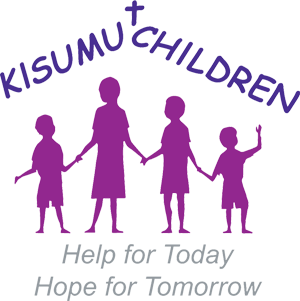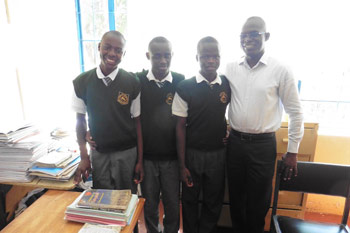For many years the education system in Kenya has been based on what is called the 8-4-4 system meaning 8 years in primary education, 4 years in secondary and 4 years of college or university. The first 8 years are divided in to lower (Standards 1 – 3), middle (Standards 4 & 5) and upper primary (Standards 6 – 8). At the end of the final primary stage, students take the national Kenya Certificate of Primary Education (KCPE) examination which is used to stream students in to secondary and technical schools.
In 2003 the education system became free for all resulting in 3 million more students being enrolled in 2012 than there were in 2003. Between 2003 and 2012, the enrolment in secondary education ratio increased from 43% to 67% as the new influx of students that had come in to the free system moved in to the next phase of their learning and the impact of the 2003 change to free education is now starting to be seen at university level where enrolment numbers more than doubled between 2012 and 2014.
At the basic level of education, the curriculum is the same throughout the country and the key subjects taught are: English, Kiswahili (a local language), Mathematics, Science, Social Studies, Religious education, Creative Arts, Physical Education, and Life Skills although at the moment only 5 subjects carry an examination for assessment. These are Kiswahili, English, Mathematics, Science and Agriculture, and Social Studies.

If children go on to secondary education, which is also free but not compulsory, there are plenty more subjects on offer and these are grouped in to 6 main categories of learning:
• Languages (English, Kiswahili, Arabic, German, French)
• Sciences (Mathematics, Chemistry, Physics, Biology)
• Applied Sciences (Home Science, Agriculture, Computer Studies)
• Humanities (History, Geography, Religious Education, Life Skills, Business Studies)
• Creative Arts (Music, Art and Design)
• Technical Subjects (Drawing and Design, Building Construction, Power and Mechanics, Metal Work, Aviation, Woodwork, Electronics)
Secondary school children can take anything up to 13 subjects! These are always narrowed down though so that by the last 2 years of secondary education they will only be studying eight. Similar to UK GCSE format, there are three core and compulsory subjects which all students must take and these are English, Kiswahili and Mathematics. They must also take two science subjects, one humanities subject and either one applied science or one technical subject. The exact subjects available will completely depend on the teaching resources available by the individual institutions.
There are three types of secondary schools in Kenya – public, private and harambe. Students with the best scores on the KCPE attend national public schools, whilst lower scoring students tend to go to provincial and district level schools. Harambee schools do not receive full funding from the government and are run by local communities. These schools are usually less selective than public schools.
At the end of 4 years of secondary education the aim is to leave with a Kenya Certificate of Secondary Education (KCSE) of grade C+ or higher which will allow entry in to University. Some Universities will require higher grades whereas a Polytechnic offering a certificate or diploma course will often take a lower grade. There are now over 20 Universities in Kenya. Compare that with 2005 when there were only 5 available, the growth rate of the higher education sector in the last 12 years has been huge and there are plans afoot for 20 more in the next few years! Similar to secondary education, there are public and private Universities with the public Universities often carrying higher prestige and wanting higher entry grades. As with any University, students can go on to achieve a Bachelor Degree, Masters or a PhD.
In the non-University sector, there are public and private technical and vocational polytechnics, teaching colleges, medical colleges, institutes of technology and professional colleges and these courses are usually around two to three years long leading to a certificate, diploma or higher national diploma.
——————————————————
The New Education System in 2017
The exciting recent news is that in May 2017 a new education system was rolled out with a focus on continual assessment rather than emphasis on one-off final exams as the country tries to align the education system with its development needs of the 21st century and it’s vocational goals for 2030. This is fantastic news because it means that education is driven towards children becoming equipped with the skills to succeed rather than just attaining high exam grades.
In the 8-4-4 system with such a focus on exam results, schools had little time to pay attention to children who were struggling with any challenges and there is no guidance on appropriate coping mechanisms that would enable them to deal with the academic pressures and other countless social issues that they face. Those that became truant and undisciplined were eventually pushed out of the school because they weren’t meeting the minimum grades. Even though primary education has been compulsory since 2003, there is little in the way of resources to enforce this and teachers are happy to see difficult children drop out.
Although this change to the education system is wonderful news, there is still a long way to go. In 2010, one million children were still out of school, the ninth highest of any country in the world. Over a quarter of young people have less than a lower secondary education and one in ten do not complete primary school. Less than 50% of primary school students continue on to secondary school and literacy rates across the country are at around 79%. There are also fears that the new curriculum has been rolled out too soon without enough training for teachers to deliver it. Teachers will need to be retrained but there is an acute shortage of teachers. Not only that but the new curriculum is learner-oriented, meaning every teacher will need to manage a small group of students. Class sizes are enormous as it is with only one teacher and no teaching assistant so it remains to be seen how feasible this will be. We watch with interest.


